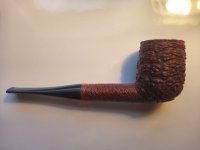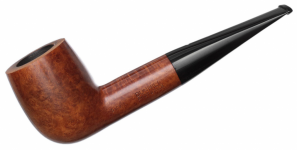Is money saved on the labor aspect?
Title edited for caps and brevity. -jpm
I've been looking at antique pipes lately and have bought a few. This is a Savinelli 111 KS. I've had my eye on some Dunhills and even bought one. I noticed, however, that the root briar pipes tend to be cheaper. I thought it might be less labor, but even the smooth seem to be a little cheaper. I'm curious as to why this may be, or if people avoid buying root briar and why. Any help would be appreciated. Cheers

Title edited for caps and brevity. -jpm
I've been looking at antique pipes lately and have bought a few. This is a Savinelli 111 KS. I've had my eye on some Dunhills and even bought one. I noticed, however, that the root briar pipes tend to be cheaper. I thought it might be less labor, but even the smooth seem to be a little cheaper. I'm curious as to why this may be, or if people avoid buying root briar and why. Any help would be appreciated. Cheers

Last edited by a moderator:









